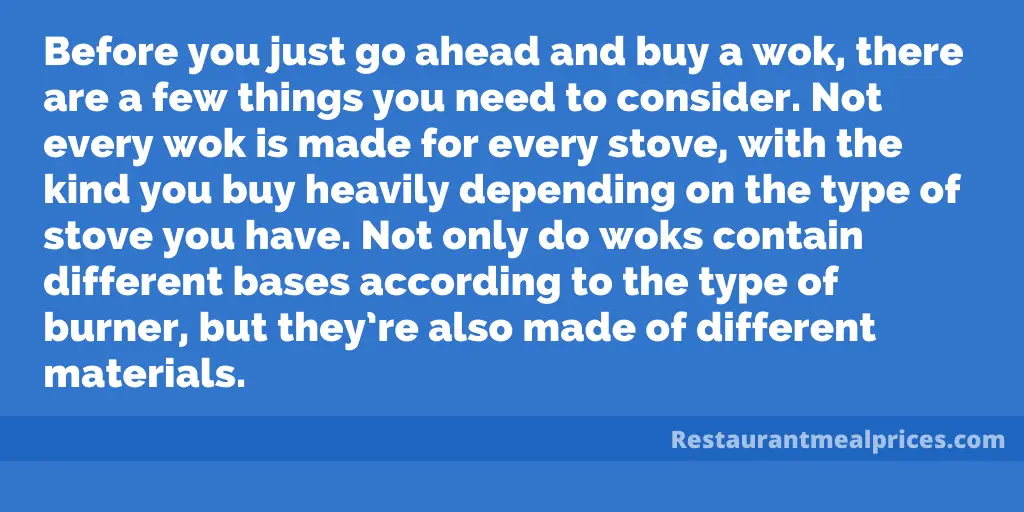We’re here today to talk about the most useful tool for cooking Thai food at home – the wok! While woks have become fairly common in home kitchens all over the world, they can feel a little intimidating, especially if you’re not from a culture where they’re regularly used. A wok is the perfect tool for making fast and flavourful meals – and luckily, there are only a few things you need to know to make a wok an essential part of your weeknight routine. Let’s take a look at some easy tips for how to cook with a wok.
Figuring Out the Right Wok For You

Before you just go ahead and buy a wok, there are a few things you need to consider. Not every wok is made for every stove, with the kind you buy heavily depending on the type of stove you have. Not only do woks contain different bases according to the type of burner, but they’re also made of different materials.
Chef and author Fuchsia Dunlop tells First We Feast what you need to look for when purchasing a wok:
“When you’re choosing a wok, you need to think about what kind of cooker [stove] you have. If you have a gas flame, you can have a traditional round-bottomed wok. But if you have an electric cooker, then you do need the kind of wok that has a flat bit at the base. You can get woks made of different materials—I favor the Chinese carbon steel ones, which heat up and cool down quickly. They have different sorts of handles. Some have one long handle—that is the easiest thing if you want to toss your food around. Other woks will have two ear handles. The good thing about those woks is they’re very stable, so for boiling or deep-frying, you do want it to be safer. A wok with about a 13-inch diameter wok is very nice for a home cook.”
Seasoning Your Wok
Why should you season your wok? If your wok is made of cast iron or carbon steel, it creates a patina or a protective coating inside of the pan. And every time you cook with oil, the patina becomes thicker and heavier, creating a natural, non-stick cooking surface.
CookingChannelTV.com tells us how to season your wok and what it should be seasoned with:
“Cast iron and carbon steel woks come coated with a film of oil; wash this off, then dry the wok by placing it over a high flame on the stove. Next, add a little oil (sesame oil is good because it burns quickly) and then use a kitchen towel (hold with a pair of tongs if you wish) to rub in the oil over the entire wok, giving it a darkened, blackened effect. Once your wok is seasoned, don’t use a metal scour or iron wool on it, as you will take off the seasoning. If you are short on time, buy a nonstick wok made from carbon steel, which is just as good.”
Preheating Your Wok
Preheating your wok is an important step to getting that same amazing stir fry at home that you’d get at a restaurant. While this may or may not be something you already do when throwing your stir fry in a regular pan, taking this extra important step will make all the difference when using a wok.
Tommy Werner of Epicurious.com explains the process of preheating your wok for the best possible results:
“Part of the reason food cooks so quickly in a restaurant kitchen wok is because of the constant high heat. To recreate stir fry at home, where the heat is tamer, set the wok on medium-high, with nothing in it. This’ll preheat the wok and bring the surface up to temperature for quick sears. How long should the empty wok sit over the flame? Until it passes Young’s water test. Oh, you don’t know about the water test? Flick a little water at the wok—if it evaporates the second it makes contact, it’s ready to go.”
Want to retire your home wok for the night and have your stir fry expertly made for you at a restaurant? Check out our list of all restaurants to compare food menus.

